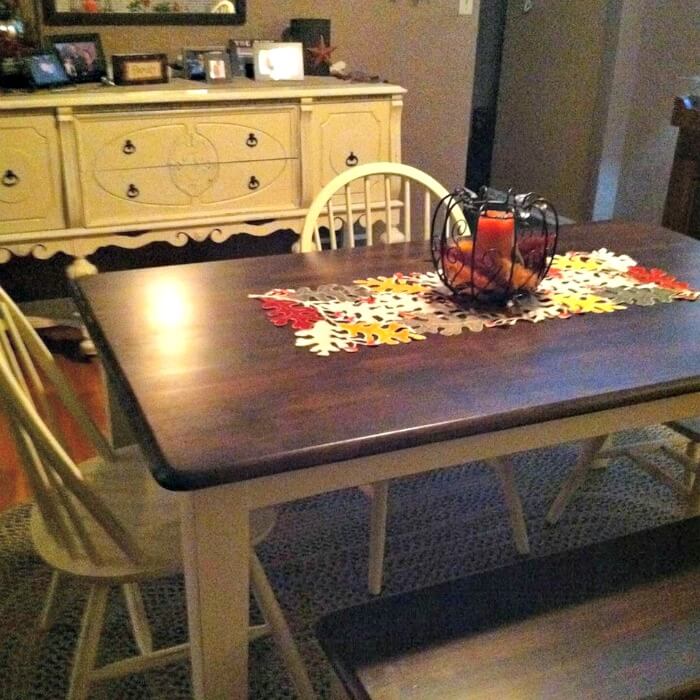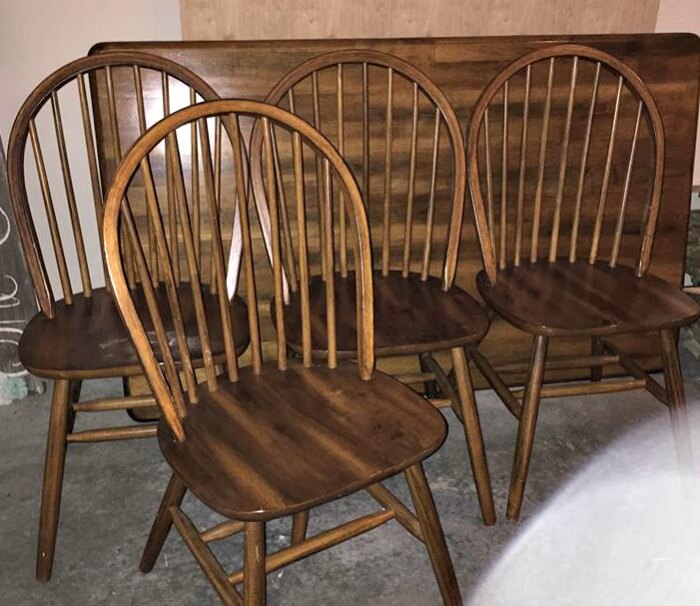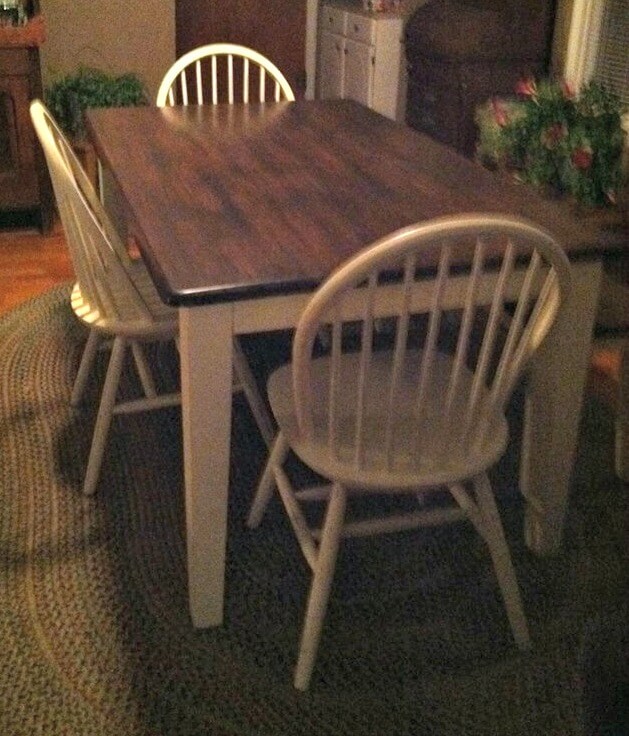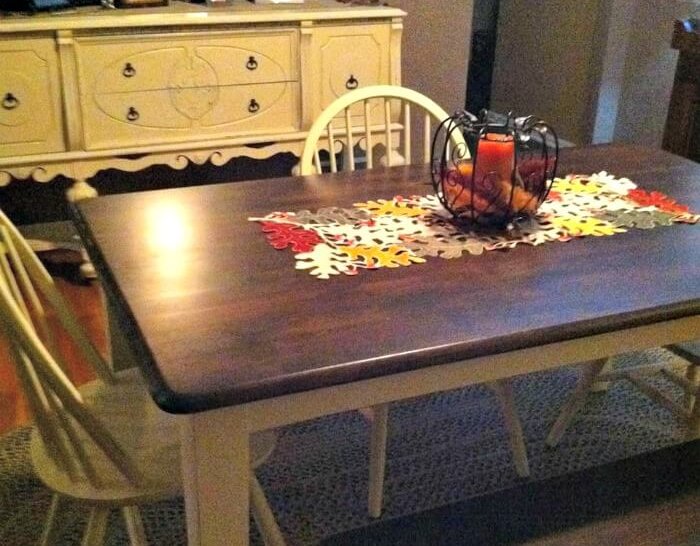Transform a golden oak dining set with gel stain and white paint! Easy step-by-step makeover tips for a fresh, modern farmhouse look.

Golden oak had a good run—but today, darker stains and white painted finishes are taking center stage in home decor. And honestly? I get it.
Just take one look at the before-and-after of this dining set makeover and you’ll see why the shift is happening.
When my cousin asked me to give her dining table and chairs a quick makeover before Thanksgiving, I was totally on board. I love projects like this—quick transformations that make a big impact.

The Before: Classic Golden Oak in Need of an Update
This dining set had good bones, but the finish was dated and didn’t reflect my cousin’s style. She wanted something clean, fresh, and a little farmhouse-chic. I already knew exactly what would bring this set to life: dark gel stain + soft white paint.
Step 1: Sand Everything (Yes, Everything)
Let’s be honest—sanding is the least fun part of any furniture makeover. But it’s so important, especially if you want your stain or paint to actually stick and look professional.
- Use a sanding block to go over every surface.
If the furniture hasn’t been previously painted, sanding by hand is better than using an electric sander, which can leave swirl marks that show through when you stain.
Pro Tip: Wear gloves and apply a good hand lotion afterward—your hands will thank you, especially during colder months.
Step 2: Degloss and Clean
After sanding, wipe everything down with a liquid deglosser to remove leftover dust and prep the surface for staining. This step also helps your stain or paint bond better.
Find a reliable deglosser here if you don’t already have one in your toolkit.
Step 3: Apply the Gel Stain
For this makeover, I used a dark oil-based gel stain from a local paint supply store. Gel stain is less intimidating than it sounds—it’s actually a great beginner-friendly product because it gives you more time to work the color before it sets.
- I used a chip brush to apply the stain, feathered it out, and kept my strokes long and even.
- Once I had the color I liked, I let it dry for 24 hours.
Pro Tip: If you’re staining indoors, opt for a water-based gel stain to cut down on fumes. It’s safer and easier to clean up.
Step 4: Seal the Top
After the stain fully dried, I applied a protective topcoat. I used Masterclear Supreme, which is super durable but also a little pricey. A more budget-friendly option would be Polycrylic—just be sure to apply 3–4 thin coats for durability.
Step 5: Paint and Distress the Base
Once the top was sealed, I painted the legs of the table and all the chairs in Navajo White. It’s a warm, creamy white that pairs beautifully with dark stain.
- I used two coats for good coverage
- Then I lightly sanded the edges for a distressed, farmhouse finish
To seal or not to seal:
- I didn’t seal the table legs since they don’t get much wear
- I did seal the chairs because they get touched and sat on constantly
The After: Farmhouse-Inspired Dining Set Glow-Up
And here’s the final reveal!
The transformation took about a day and a half of focused work, and while the chairs were definitely the most time-consuming part, the project wasn’t nearly as intimidating as it looked going in.
Most importantly—my cousin loved how it turned out, and that’s always the best part.

Is Golden Oak on Its Way Out?
If you’re tired of that honey-colored oak look, you’re not alone. Whether you’re updating kitchen cabinets, vanities, or vintage furniture, a mix of dark stain and white paint can modernize almost anything.
Want to Learn How to Paint Furniture Like a Pro?
I’ve put together a free furniture painting guide packed with tips, tools, and step-by-step instructions to help you confidently take on your own DIY makeovers—without the overwhelm.



Cindy
Monday 24th of November 2014
Looks great! I was just looking at the Navajo White paint swatch earlier this morning, and it seems pretty creamy. Is it more "white" or "cream" in person? xo
Kala
Wednesday 10th of December 2014
Sorry it took me so long to reply. I think it's more white honestly. It's not yellowy like other cream colors I've tried, but it's creamy enough to be more "primitive" than straight up white. :)